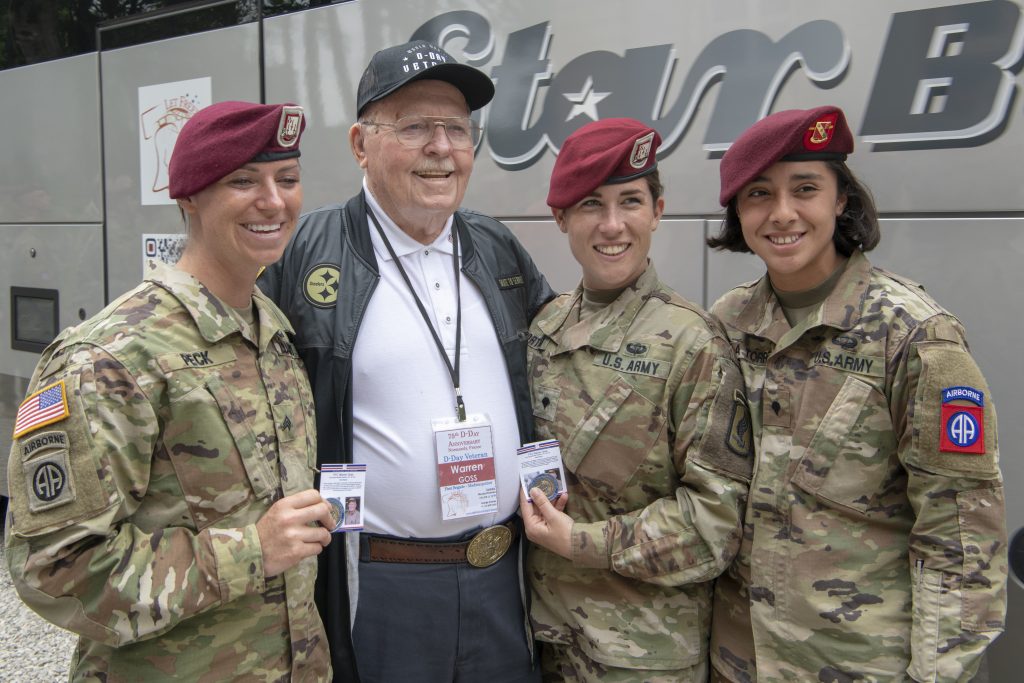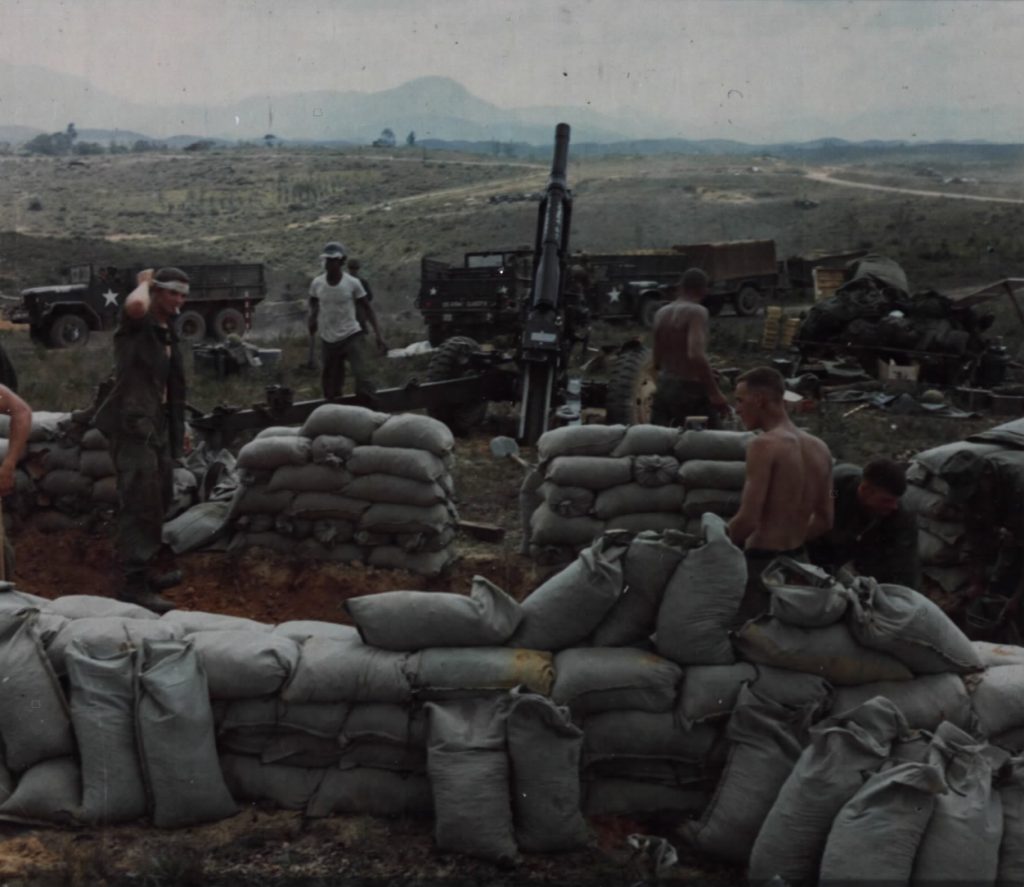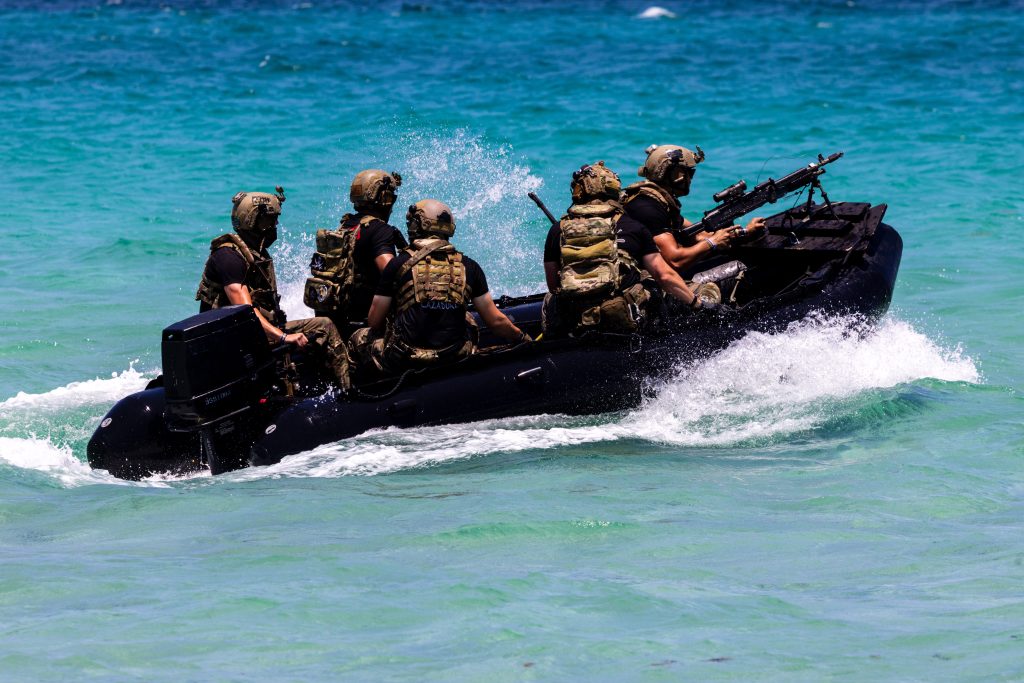Airborne All The Way: The Legacy and Evolution of the US Army Airborne

Few military organizations capture the imagination and admiration of the public, quite like the United States Army Airborne. Known for their courage, elite training, and unparalleled versatility, these soldiers have played a pivotal role in shaping modern warfare. Since its inception in the early 1940s, the US Army Airborne has become synonymous with the phrase “Airborne All The Way,” representing their unwavering commitment to excellence.
From the daring jumps behind enemy lines during World War II to rapid-response missions in the modern era, the Airborne forces have consistently proven their value on the battlefield. This article explores their storied history, from the heroic efforts of the 82nd and 101st Airborne Divisions during WWII to their evolution in contemporary military operations. We’ll also explore the intricate craft of parachute rigging, a vital component of Airborne success, and highlight the Golden Knights, the Army’s official parachute demonstration team and ambassadors of airborne excellence.

Origins and History of US Army Airborne
The origins of the US Army Airborne can be traced to the innovative military tactics emerging before World War II. The success of Soviet and German experiments with paratroopers during the interwar period caught the attention of military strategists worldwide. Inspired by these advancements, the United States began exploring the concept of airborne forces to insert troops into enemy territory with speed and surprise.
(Visit Jason's Amazon Authors Page)
In 1940, the US Army Parachute Test Platoon was established, marking the official beginning of American airborne forces. This group of brave volunteers conducted rigorous training and tests, laying the foundation for developing Airborne tactics and equipment. Their success quickly led to the formation of the first airborne divisions: the 82nd Airborne Division, originally an infantry division, and the 101st Airborne Division, famously known as the “Screaming Eagles.” These units would go on to earn legendary status in military history.
World War II Contributions
World War II was the proving ground for the US Army Airborne, and their contributions were nothing short of transformative. Airborne troops became a critical asset in achieving Allied objectives, executing daring missions that showcased their bravery and strategic importance.
Operation Overlord (D-Day) was one of the most iconic missions involving Airborne forces. On June 6, 1944, paratroopers from the 82nd and 101st Airborne Divisions dropped behind enemy lines in Normandy to disrupt German defenses ahead of the beach landings. Despite scattered drops and heavy resistance, their efforts were instrumental in securing key objectives and paving the way for Allied success.
Operation Market Garden, launched in September 1944, remains the largest airborne operation in history. Designed to secure bridges across the Netherlands, the mission demonstrated the potential and limitations of airborne operations. Though the operation faced setbacks, the valor of the paratroopers was undeniable.


During the Battle of the Bulge in December 1944, the 101st Airborne Division, known as the “Screaming Eagles,” played a pivotal role in defending Bastogne, Belgium. Encircled by German forces in the freezing Ardennes Forest, the 101st faced relentless artillery barrages, shortages of food and ammunition, and harsh winter conditions. Despite these challenges, the division held the critical crossroads town, preventing the German advance and disrupting their larger offensive. Their stand became legendary when Brigadier General Anthony McAuliffe, acting division commander, responded to a German surrender demand with a single word: “Nuts!” Reinforced by General George Patton’s Third Army, the 101st emerged from the siege as heroes, their resilience at Bastogne cementing their place in military history. In tribute to this legacy, the Army football team will wear uniforms inspired by the 101st Airborne Division’s defense of Bastogne during the upcoming Army-Navy Game on December 14, 2024.
Airborne troops faced numerous challenges throughout the war, from hazardous parachute drops to fierce enemy resistance. Their heroics helped turn the tide of the war and cemented their reputation as elite warriors.
Post-War Evolution
Following World War II, the role of Airborne forces evolved to meet the demands of the Cold War and beyond. With the advent of nuclear threats and geopolitical tensions, Airborne units were positioned as rapid-deployment forces capable of responding to crises worldwide.
During the Vietnam War, the Airborne adapted to the unique challenges of jungle warfare. Paratroopers often combined traditional airborne tactics with helicopter-borne assaults, exemplifying their flexibility and ingenuity in combat.

In subsequent conflicts like the Gulf War, Iraq, and Afghanistan, Airborne units continued to showcase their value. They played critical roles in initial invasions, securing key objectives, and conducting follow-on operations in hostile environments. With advancements in technology and training, the Airborne adapted to the ever-changing nature of modern warfare while maintaining the legacy of courage and excellence that defined their origins.
Airborne in Modern Operations
In the 21st century, US Army Airborne units remain at the forefront of rapid-response and global intervention roles. Their ability to deploy quickly and operate in austere environments makes them an invaluable asset to the modern military. As threats evolve and crises emerge worldwide, Airborne forces are often the first on the ground, bringing unparalleled expertise and agility to critical missions.
Beyond combat operations, Airborne units have played a significant role in humanitarian missions. Their rapid deployment capability allows them to deliver aid and support during natural disasters and emergencies. For instance, Airborne forces have provided disaster relief in regions affected by earthquakes, hurricanes, and floods, showcasing their versatility and dedication to humanitarian causes.
Additionally, Airborne soldiers are integral to special operations missions. From counter-terrorism to hostage rescues, these highly trained units collaborate with special operations forces to achieve strategic objectives. Their ability to insert covertly into hostile territory via airborne operations continues to be a hallmark of their capabilities.

Integration of Advanced Technology
The modern battlefield demands that Airborne units adapt to cutting-edge technology to maintain their edge. One significant advancement is the widespread use of GPS and advanced communication systems, which enhance navigation and coordination during airborne operations. These tools allow paratroopers to adjust quickly to unexpected challenges, ensuring precision and mission success even in complex environments.
Modern parachutes have also revolutionized Airborne operations. Today’s systems are designed for greater accuracy, control, and safety, enabling paratroopers to land closer to their objectives with reduced risk. High-performance parachutes, such as steerable models, have expanded the range of airborne tactics and allowed for more complex mission planning.
Training programs for Airborne units have likewise evolved to incorporate modern technology and address contemporary challenges. Simulations and virtual reality are increasingly used to prepare soldiers for real-world scenarios, providing a safe and effective way to build skills. Physical training regimens have also been updated to emphasize the endurance and versatility required for 21st-century operations.
Through these advancements, US Army Airborne units continue demonstrating their adaptability and relevance, ensuring their place as an essential component of modern military strategy.

Army Special Forces and Airborne Operations
Rangers: Masters of Airborne Assault
The US Army Rangers, part of the 75th Ranger Regiment, are among the most elite light infantry forces in the world, known for their ability to execute high-risk missions. Airborne operations are a cornerstone of their capabilities, enabling them to deploy rapidly into hostile or denied territories. Rangers are trained extensively in static-line parachuting, often serving as the vanguard for larger military operations.
One notable example of the Rangers’ airborne expertise was during the invasion of Grenada in 1983, where they conducted combat jumps to seize key airfields and facilitate the arrival of follow-on forces. Their ability to execute precision airborne assaults allows them to disrupt enemy operations and secure critical objectives. This capability ensures the Rangers remain versatile, ready to deploy globally quickly.
In addition to their direct combat role, Rangers frequently collaborate with other special operations forces, utilizing airborne insertions for reconnaissance, raids, and other high-stakes missions. Their rigorous training and reliance on Airborne tactics make them indispensable to the US Army’s special operations arsenal.

Special Forces (Green Berets): Strategic Airborne Operators
US Army Special Forces, commonly known as the Green Berets, also leverage airborne operations as a critical tool in their mission. These highly trained soldiers specialize in unconventional warfare, foreign internal defense, and counter-terrorism, often operating in small, autonomous teams behind enemy lines. Their mastery of airborne insertions, including both static-line and free-fall techniques, allows them to infiltrate undetected and establish a presence in areas inaccessible by other means.
One of the most well-known applications of Special Forces airborne capabilities occurred during Operation Enduring Freedom in Afghanistan. Green Berets conducted high-altitude jumps to establish initial footholds in remote areas, enabling them to partner with local resistance forces to dismantle Taliban control. This demonstrates their ability to integrate airborne techniques into complex, multi-faceted operations.
Special Forces also use High-Altitude-Low-Opening (HALO) and High-Altitude-High-Opening (HAHO) parachuting techniques for covert insertions. These methods allow for precise landings and the ability to evade detection, making them essential for missions requiring stealth and precision. Airborne training is integral to their pipeline, ensuring they can adapt to any mission environment.
Integration and Collaboration
Rangers and Green Berets frequently collaborate with conventional Airborne units to execute joint operations. For example, they often rely on the logistical support and expertise of the 82nd and 101st Airborne Divisions during large-scale deployments. This partnership enables seamless integration of Airborne tactics with broader mission objectives, enhancing the Army’s overall operational effectiveness.
Airborne operations also serve as a unifying skill set across the Army’s special operations forces. Whether conducting direct action, training partner forces, or gathering intelligence, Airborne capabilities provide the speed, flexibility, and strategic advantage these elite units require. Their shared reliance on Airborne tactics fosters a sense of camaraderie and mutual respect among these specialized soldiers.

Parachute Rigging: An Art and Science
Parachute rigging is a cornerstone of Airborne operations, ensuring the safety and effectiveness of every jump. For paratroopers, the reliability of a parachute determines whether they safely reach the ground or face potentially fatal consequences. Rigging involves technical expertise, a keen attention to detail, and a commitment to absolute precision.
Parachute riggers are vital in Airborne missions, inspecting, packing, and maintaining parachutes. Their work demands adherence to strict protocols to eliminate any chance of failure. This meticulous process highlights the riggers’ importance in ensuring mission success and the safety of the soldiers relying on their work.
The riggers’ creed, “I will be sure always,” reflects the high stakes of their duties. Each parachute they pack must meet exacting standards because even the slightest oversight can lead to disaster. The riggers’ unwavering focus and skill enable the Airborne to perform their missions confidently.
Types of Parachutes
Airborne operations utilize several types of parachutes, each designed to meet specific mission requirements. The most commonly used system for mass troop deployment is the static-line parachute, such as the T-11, which automatically deploys when the jumper exits the aircraft. This system is ideal for rapid, large-scale deployments, ensuring efficiency and reducing the margin for error.
For more specialized missions, free-fall parachutes offer enhanced control and tactical flexibility. Techniques like High Altitude-Low Opening (HALO) and High Altitude-High Opening (HAHO) allow soldiers to deploy at high altitudes and travel long distances undetected. These systems are used for covert operations and allow paratroopers to reach their objectives precisely.
Modern parachutes incorporate advanced materials and design features to maximize safety and functionality. Lightweight, durable fabrics have replaced older materials, while steerable canopies allow jumpers to navigate with precision. These innovations ensure that parachutes are not only reliable but also adaptable to the demands of contemporary warfare.
Training for Rigging
Becoming a parachute rigger involves rigorous training that ensures soldiers master every aspect of their craft. Riggers begin their journey at the US Army Quartermaster School’s Parachute Rigger Course, receiving classroom instruction and hands-on training. This program teaches them to pack, inspect, and repair static-line and free-fall parachutes to the highest standards.
Training emphasizes the importance of precision, as even minor mistakes can have catastrophic consequences. Riggers are evaluated through challenging practical exercises, including jump-testing parachutes they have packed themselves. This requirement builds their confidence and ensures they fully understand the gravity of their work.
Ongoing training and recertification are integral to maintaining riggers’ skills and keeping them prepared for the demands of combat operations. Riggers consistently demonstrate their expertise and reliability when working in controlled environments or high-stress combat zones. Their contributions allow Airborne troops to focus on their missions, knowing that their equipment will perform flawlessly.
The Golden Knights: Ambassadors of Airborne Excellence
The Golden Knights, officially known as the US Army Parachute Team, were established in 1959 as the Army’s elite demonstration and competition parachute team. Their formation was driven by a need to counter the dominance of Soviet teams in international skydiving competitions during the Cold War. Over time, the Golden Knights expanded their role beyond competition to include public demonstrations and recruitment efforts.
The mission of the Golden Knights is to showcase the professionalism, skill, and precision of US Army personnel. By performing at airshows, sporting events, and public gatherings, they act as ambassadors for the Army, bridging the gap between the military and civilians. Through their high-profile demonstrations, they inspire audiences and highlight the expertise and dedication of Airborne soldiers.
Today, the Golden Knights are recognized as one of the most accomplished parachute teams in the world. Their commitment to excellence has earned them widespread respect, making them a vital part of the Army’s outreach and recruiting efforts.
Achievements and Recognition
The Golden Knights have an impressive track record in competitive and exhibition parachuting. They have won hundreds of gold medals in national and international competitions, solidifying their status as a dominant force in skydiving. Their achievements include setting multiple world records, such as formation skydiving feats and high-altitude jumps.
One of their most notable contributions is their ability to perform in challenging conditions and execute complex aerial maneuvers precisely. These skills are not just for show; they reflect the rigorous training and discipline instilled in all Army paratroopers. Their performances captivate audiences and leave a lasting impression on those who witness their skill and teamwork.
In addition to their competitive successes, the Golden Knights are frequently invited to participate in high-profile events. They have performed for presidents, dignitaries, and large crowds at iconic venues, solidifying their role as premier representatives of the US Army.

Training and Skills
The path to becoming a Golden Knight is highly selective and demanding. Candidates must already be experienced parachutists before applying to join the team. Once selected, they undergo a rigorous training program emphasizing physical fitness, aerial techniques, and teamwork.
Golden Knights practice tirelessly to perfect their routines, often conducting hundreds of jumps to refine their precision and coordination. Their training includes advanced techniques in canopy control, freefall formation flying, and demonstration jumps into confined or high-profile locations. Safety is paramount, and their attention to detail ensures flawless performances.
Beyond technical skills, the Golden Knights excel in engaging with the public and serving as role models for future soldiers. Their ability to connect with audiences and inspire interest in the Army is critical to their mission. They embody the values of discipline, excellence, and service through thrilling performances or personal interactions.
Conclusion
From its daring beginnings during World War II to its continued relevance in modern military operations, the US Army Airborne has carved out a remarkable legacy. Its contributions on the battlefield, commitment to innovation, and dedication to excellence have solidified its place as one of the most respected units in the US military.
The “Airborne Spirit” and the achievements of groups like the Golden Knights testify to these elite soldiers’ courage, skill, and resilience. Beyond their military contributions, they have become symbols of bravery and determination, inspiring generations of Americans and leaving an indelible mark on history and culture.
As the Airborne continues to evolve to meet the challenges of the 21st century, one thing remains clear: their legacy of service and sacrifice will endure, ensuring they remain “Airborne All The Way.”
Follow me @
BaremetalCyber: https://baremetalcyber.com
Amazon Author: https://amzn.to/4fjmdUj
Linkedin: https://www.linkedin.com/in/jasonedwardsdmist/
X/Twitter: https://x.com/Trackpads
Instagram: https://www.instagram.com/baremetalcyber/
TikTok: https://www.tiktok.com/@trackpads
Flikr: https://www.flickr.com/photos/trackpads
Vimeo: https://vimeo.com/user229877950
#USArmyAirborne #AirborneAllTheWay #MilitaryHistory #WWIIHeroes #BattleoftheBulge #101stAirborne #GoldenKnights #ArmyStrong #Paratroopers #SpecialForces #ScreamingEagles #ModernMilitary #MilitaryLegacy #AirborneOperations #USArmy
